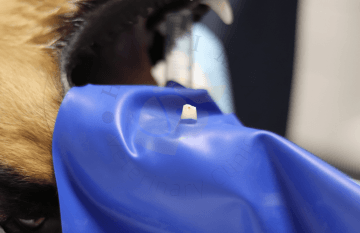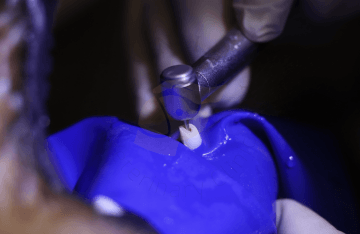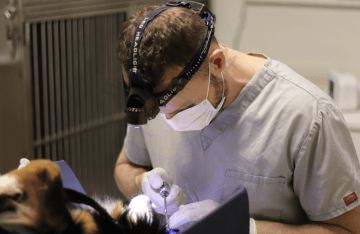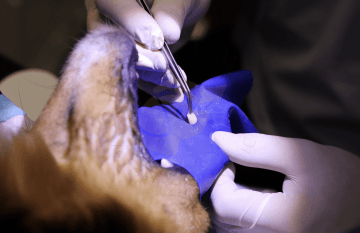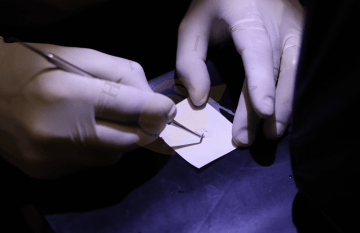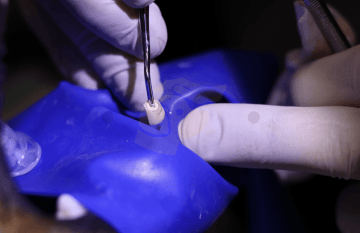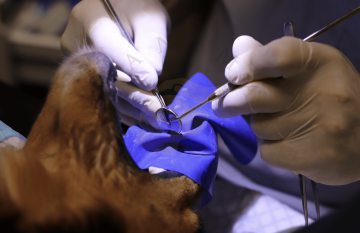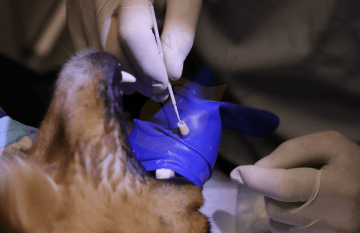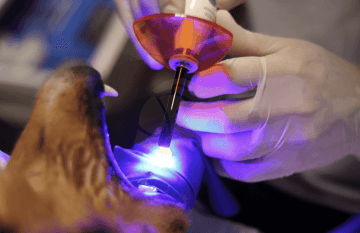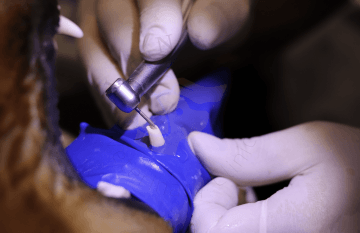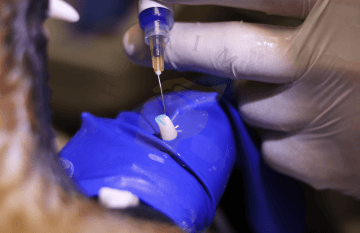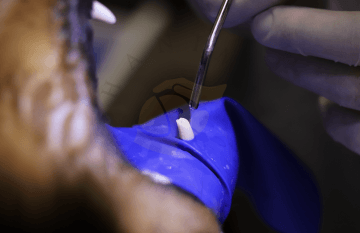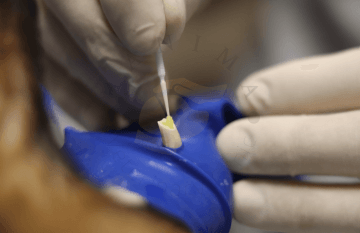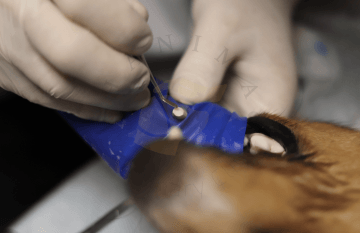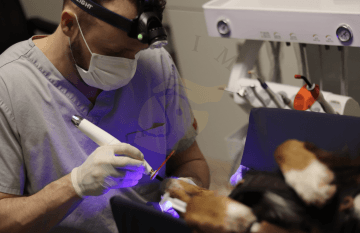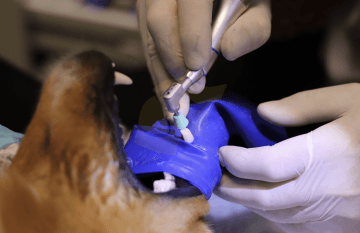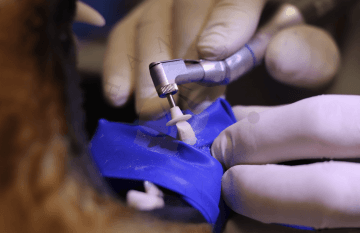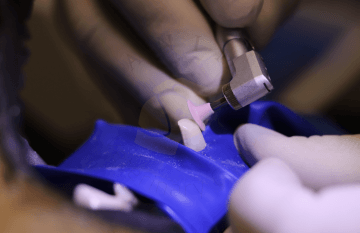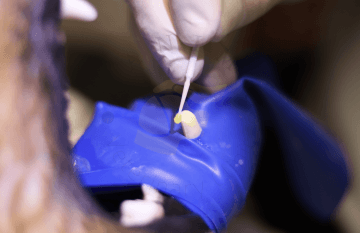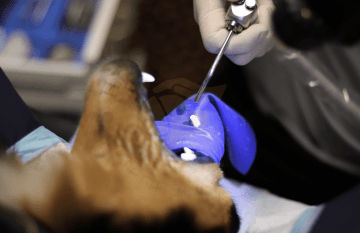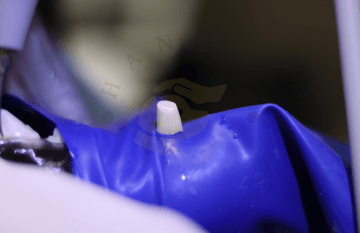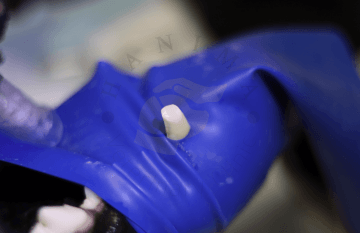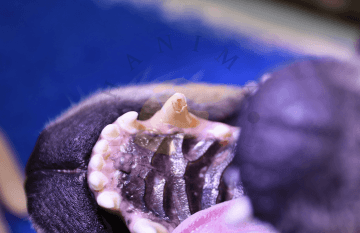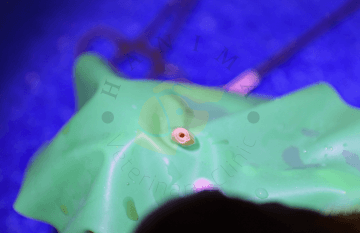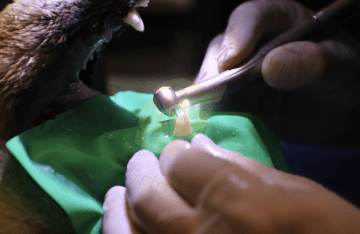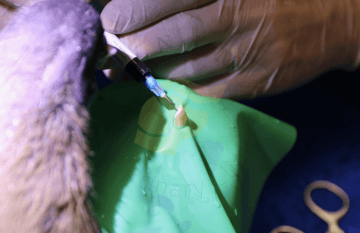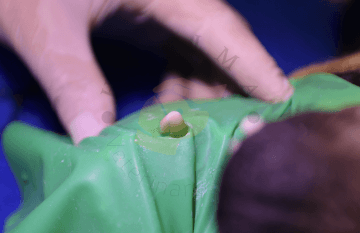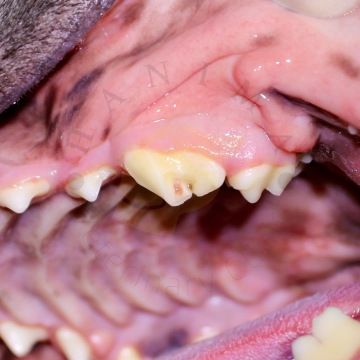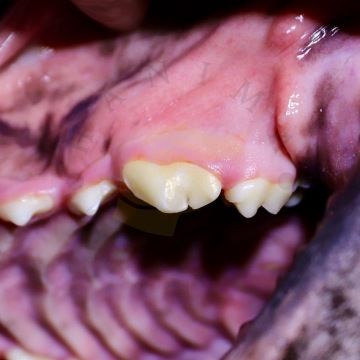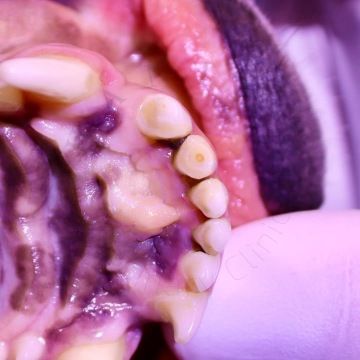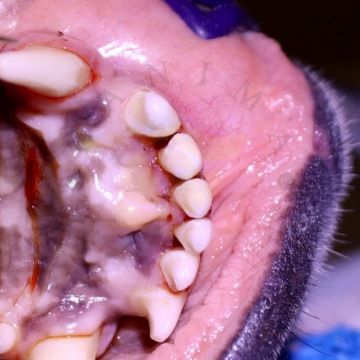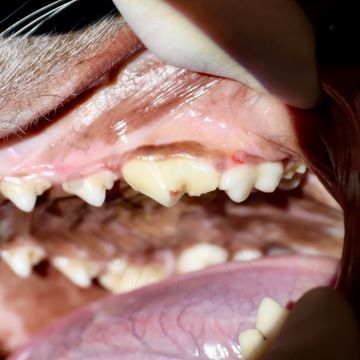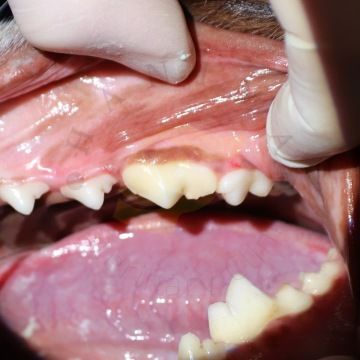Vital amputation of the pulp
Professional Dental Consultation
The first step before any dental procedure with us is always a professional dental consultation, also known as a dental examination. Without this, we are unable to determine the type, extent, or cost of the necessary dental or dental surgical procedure. We strive to approach our clients transparently to ensure that it is entirely clear what needs to be done and how much it will cost.
The price for a professional dental consultation is 940 CZK.
What is vital pulp amputation?
Vital pulp amputation (VPT - vital pulp therapy) is performed mainly in dogs under 18 months of age. The goal of this treatment is to preserve the tooth structure and allow it to mature. It is an alternative to extraction or root canal therapy. A small amount of pulp tissue is removed using sterile instruments. Subsequently, a medicinal insert (calcium hydroxide) is applied to the newly exposed pulp, which enables healing and the creation of a natural dentine bridge and the closure of the pulp cavity.
What is the difference between vital pulp amputation and root canal therapy?
Vital pulp amputation is also called "partial coronal pulpectomy", while root canal therapy is complete pulpectomy (complete pulp removal). If the entire pulp is removed, the tooth is dead and will not develop further. Root canal therapy is performed on vital, dying and non-vital teeth. While vital pulp amputation is only used for vital (living) teeth, dental x-rays are always required to assess whether the tooth is still vital.
Especially in young teeth (up to 18 months), the tooth is very fragile and can easily break, moreover, the development of the root has not been completed. If such a tooth were to be treated with root canal therapy, it would remain permanently fragile and underdeveloped, i.e. it could easily break. On the contrary, vital pulp amputation therapy will allow the tooth to complete root development, its closure, and also to gain strength and become more resistant to fracture.
Simply:
vital pulp amputation is best suited for young, immature teeth
root canal therapy is more suitable for animals older than eighteen months
Where is vital pulp amputation used?
In our clinic, vital amputation of the pulp is most commonly used in the following cases:
acute tooth fracture with pulp exposure - complicated crown fracture
acute tooth fracture with almost pulp exposure
certain types of malocclusions
Dental trauma is unfortunately common and is often the result of inappropriate chew toys or aggressive chewing and playing behavior. In many cases, a broken tooth has exposed pulp. If the trauma is recent (lasting less than 48 hours), vital pulp amputation therapy may be chosen to keep the tooth alive. This is especially important in young animals, which may have teeth with incomplete root development (the tip of the root is not yet closed). In the case of near-exposure, the pulp is not actively exposed to the external environment. Although there is still a very thin layer of dentin on the pulp, there is a high risk of irreversible pulpitis (a painful condition for the animal). The third possibility of using vital pulp amputation therapy is as an orthodontic procedure in cases of liguovesian mandibular canines (the lower canines are bent inwards towards the tongue). The lower canines rotated in this way subsequently injure the animal's hard palate and can subsequently cause an oronasal fistula. An oronasal fistula is an abnormal communication between the oral and nasal cavities that leads to chronic upper respiratory infections. By performing crown reduction and vital pulp amputation therapy on the lower canines, painless occlusion is achieved without losing these functionally important teeth.
What to expect after vital amputation of the pulp?
Vital pulp therapy is successful in most cases with a success rate greater than 90%. It is an option to preserve tooth structure and function. Patients who have undergone VPT therapy should subsequently undergo an intraoral follow-up X-ray to confirm the success of the treatment and to verify that the root of the tooth has completed its development and that the tip of the root has closed.

